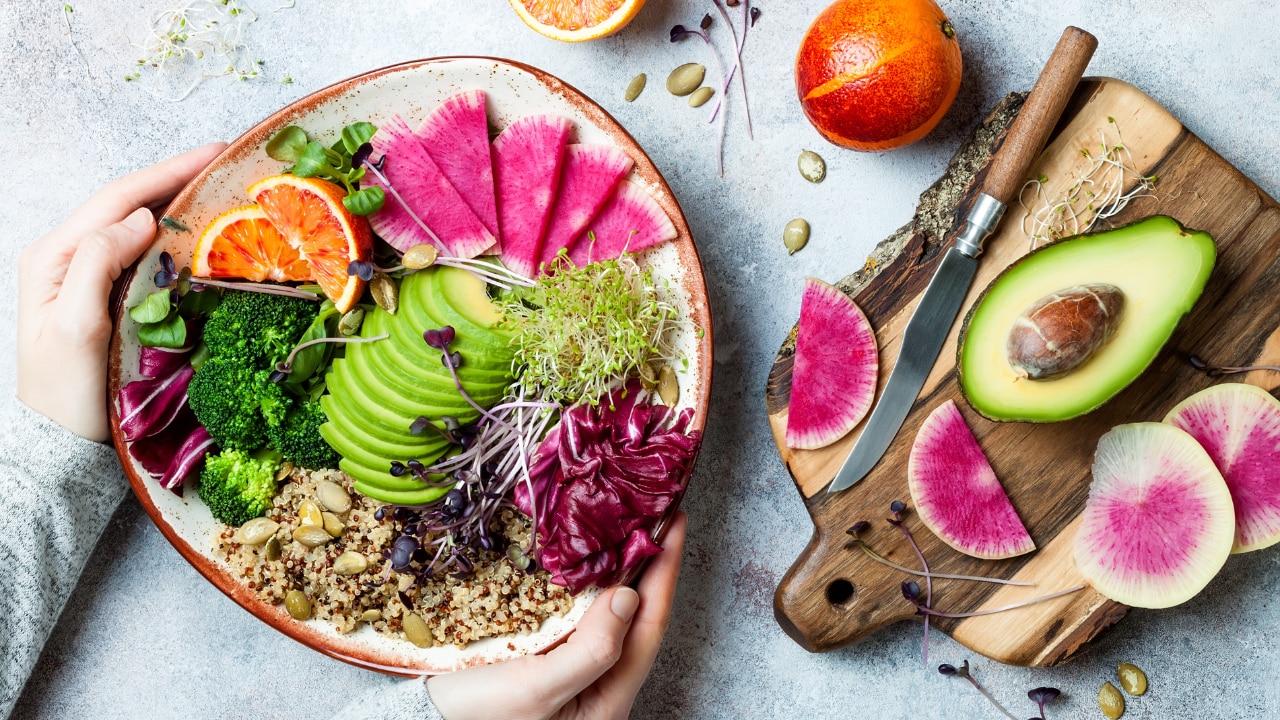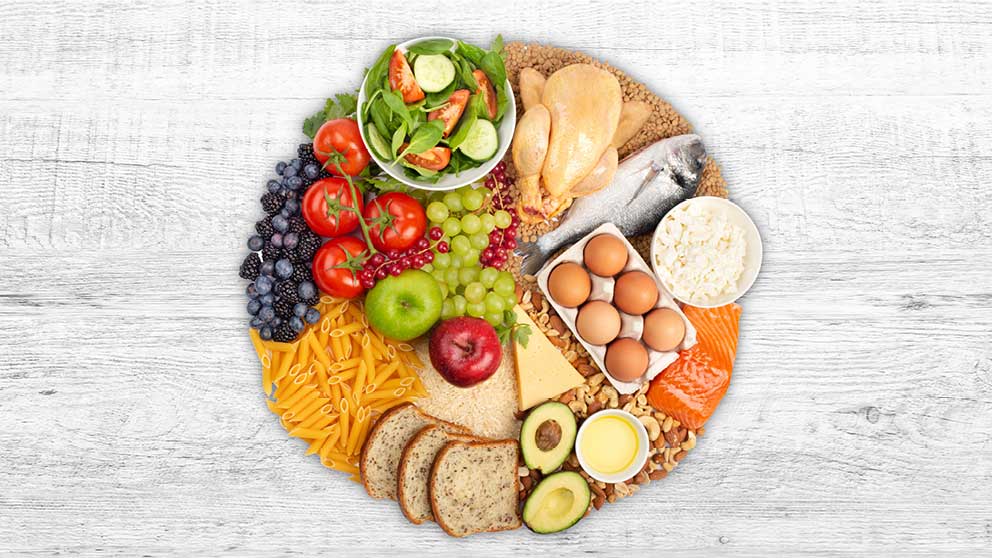
Healthy Food and Unhealthy Food
The Battle of the Plate: A Comprehensive Guide to Healthy vs. Unhealthy Foods
In the pursuit of optimal health and well-being, understanding the difference between healthy and unhealthy foods is crucial. The choices we make on our plates can significantly impact our overall wellness, energy levels, and risk of chronic diseases. This blog post aims to provide a comprehensive guide to distinguish between healthy and unhealthy food choices, empowering readers to make informed decisions that support their long-term health goals.
Defining Healthy Food
Healthy foods are those that provide the body with essential nutrients, promote satiety, and contribute to overall well-being. Here are the key characteristics that define healthy food choices:
A. Nutrient Density
Nutrient-dense foods are packed with vitamins, minerals, fiber, and antioxidants that serve various functions in the body. These include:
1. Examples of nutrient-dense foods: Fresh fruits and vegetables, whole grains, lean proteins (such as fish, poultry, legumes, and tofu), nuts, and seeds.
2. Benefits of these nutrients: They support immune function, energy production, tissue repair, and disease prevention. Antioxidants help combat cellular damage from free radicals, while fiber aids digestion and promotes feelings of fullness.
B. Balanced Macronutrients
Macronutrients – carbohydrates, proteins, and fats – are essential for maintaining optimal health. A balanced diet should provide the right proportions of each:
1. Ideal ratios and sources: Aim for a balanced plate with approximately 50-60% carbohydrates (from whole grains, fruits, and vegetables), 20-30% protein (from lean sources), and 20-30% healthy fats (from nuts, seeds, avocados, and fatty fish).
2. Contributions to health: Carbohydrates provide energy, proteins support muscle growth and repair, and healthy fats aid nutrient absorption and contribute to satiety, sustained energy levels, and brain function.
C. Minimal Processing and Added Ingredients
Healthy foods are typically found in their natural, unprocessed or minimally processed state, without the addition of excessive sugars, sodium, or unhealthy fats.
1. Minimal processing preserves the integrity of the food, retaining its natural nutrients and fiber.
2. Avoiding added sugars, excessive sodium, and unhealthy fats (such as trans fats) can help prevent weight gain, high blood pressure, and other health issues.
Understanding Unhealthy Foods
On the other hand, unhealthy foods can be characterized by their lack of nutritional value, excessive processing, and high levels of potentially harmful ingredients.
A. Nutrient-poor and Calorie-dense
Unhealthy foods are often devoid of essential nutrients but high in calories, contributing to weight gain and chronic diseases if consumed in excess.
1. Examples of empty-calorie foods: Soda, candy, cookies, chips, and deep-fried foods like french fries and doughnuts.
2. Effects of overconsumption: Eating too many calorie-dense, nutrient-poor foods can lead to weight gain, obesity, and an increased risk of conditions like heart disease, type 2 diabetes, and certain cancers.
B. Excessive Processing and Artificial Ingredients
Processing can strip away beneficial nutrients and introduce artificial colors, flavors, preservatives, and sweeteners.
1. The impact of processing: Highly processed foods often lose their natural fiber, vitamins, and minerals during manufacturing. Artificial additives may be used to enhance flavor, color, and shelf life, but their long-term health effects are not fully understood.
2. Risks associated with artificial ingredients: Some studies suggest potential links between artificial ingredients and negative health outcomes, such as hyperactivity in children, allergic reactions, and disruptions in the gut microbiome.
C. High in Unhealthy Fats, Sodium, and Sugar
Many unhealthy foods contain excessive amounts of saturated and trans fats, sodium, and added sugars, which can have detrimental effects on health.
1. Impact of unhealthy fats: Saturated and trans fats, found in products like fried foods, baked goods, and processed meats, can raise cholesterol levels and increase the risk of heart disease.
2. Connection between high sodium intake and hypertension: Consuming too much sodium, often found in processed and canned foods, can contribute to high blood pressure, a major risk factor for heart disease and stroke.
3. The role of excess sugar: Added sugars, found in sweetened beverages, desserts, and many processed foods, can contribute to weight gain, obesity, type 2 diabetes, and other health issues when consumed in excess.
Making Informed Choices: A Lifestyle Perspective
Adopting a predominantly healthy diet doesn’t mean depriving yourself of all indulgences. It’s about finding a sustainable balance and making informed choices that align with your long-term health goals.
A. Moderation and Variety
Allow yourself to enjoy occasional treats, but maintain a lifestyle where nutritious choices make up the bulk of your diet. Embrace variety by incorporating different fruits, vegetables, whole grains, and lean protein sources to ensure you’re getting a wide range of nutrients.
B. Reading Food Labels and Ingredient Lists
Get into the habit of reading nutrition labels and ingredient lists to make informed decisions about the products you purchase. Look for foods with minimal added sugars, sodium, and unhealthy fats, and prioritize those with shorter, more recognizable ingredient lists.
C. Preparing Meals at Home versus Eating Out
Cooking meals at home allows you to control the ingredients and portion sizes, making it easier to maintain a healthy diet. When dining out, be mindful of your choices and opt for healthier options like grilled proteins, steamed vegetables, and whole grains.
D. Choosing Healthier Alternatives without Sacrificing Taste
With a little creativity and an open mind, you can find delicious and satisfying alternatives to unhealthy foods. Experiment with new recipes, seasonings, and cooking techniques to make healthy eating enjoyable. Swap out sugary snacks for fresh fruit, replace white bread with whole-grain options, and explore plant-based protein sources like lentils and tofu.
Conclusion
Understanding the differences between healthy and unhealthy foods is a crucial step in achieving optimal health and well-being. Healthy foods provide essential nutrients, balanced macronutrients, and minimal processing, while unhealthy foods are often calorie-dense, highly processed, and high in unhealthy fats, sodium, and added sugars.
Strive to make nutritious choices the foundation of your diet, allowing for occasional indulgences in moderation. Consistency and long-term habits are key to reaping the benefits of a predominantly healthy lifestyle.
Remember, the battle of the plate is ongoing, but with the right knowledge and commitment, you can emerge victorious, fueling your body with the nutrients it needs to thrive.
Additional Tips and Resources
To further support your journey towards healthier eating habits, consider exploring the following resources:
A. Recipes and Meal Planning Tips
- “The Skinnytaste Cookbook” by Gina Homolka
- “The Lean Muscle Diet” by Alan Aragon and Lou Schuler
- Websites like Skinnytaste, FitMenCook, and BudgetBytes for healthy recipe inspiration
B. Expert Advice and Support Services
- Consider consulting with a registered dietitian or nutritionist for personalized guidance based on your unique health needs and dietary preferences.
- Join online communities or support groups focused on healthy eating and lifestyle changes for motivation and accountability.
By equipping yourself with knowledge, resources, and expert advice, you can navigate the battle of the plate with confidence, making choices that nourish your body and promote long-term well-being.
:max_bytes(150000):strip_icc()/article_291139_the-top-10-healthiest-foods-for-kids_-02-4b745e57928c4786a61b47d8ba920058.jpg)


:max_bytes(150000):strip_icc()/greek-salmon-bowl-f681500cbe054bb1adb607ff55094075.jpeg)

